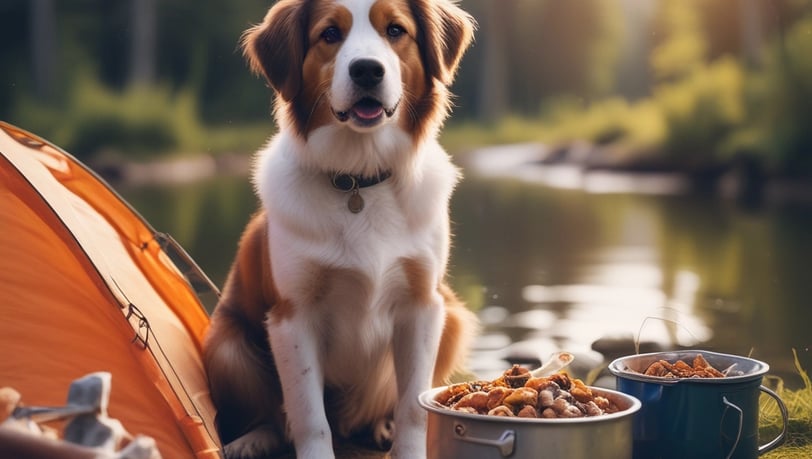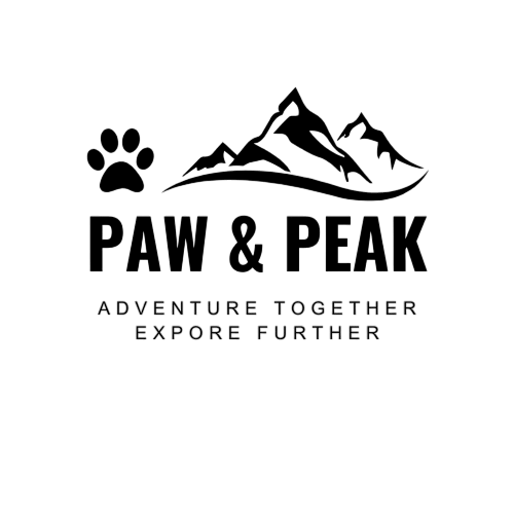Nutrition on the Trail: Meal Planning for You and Your Pet


Top Products for Trail Nutrition
For Your Furry Friend:
Ruffwear Kibble Kaddie - Portable, lightweight food storage that keeps kibble fresh
Outward Hound Port-A-Bowl - Collapsible water and food bowl for easy packing
Zuke's Mini Naturals - Small, nutrient-dense training treats perfect for the trail
Stella & Chewy's Freeze-Dried Raw - Lightweight, nutrient-rich meal option
Buddy Bowl - Spill-proof water bowl for bumpy trails and camp setups
For You:
Jetboil Flash Cooking System - Quick, efficient meal preparation for both of you
HydraPak Stash Bottle - Collapsible water storage that works for both human and pet needs
Sea to Summit Alpha Pot Set - Lightweight cookware suitable for preparing both your meals
Lunchskins Reusable Food Bags - Eco-friendly storage for treats and snacks
OXO Outdoor Flip & Fold Spatula - Compact tool for making hot meals at camp
Ever noticed how your four-legged hiking buddy seems to have double the appetite on the trail? You're not imagining things. Just like us, our pets burn significantly more calories during outdoor adventures, and keeping them properly fueled is just as important as maintaining our own energy levels. When my Lab mix Luna and I started hiking regularly, I was amazed at how quickly she'd go through her normal food portions and still seem hungry. That's when I learned that active dogs can need up to 50% more calories during high-activity days, depending on terrain difficulty, temperature, and activity duration.
The increased caloric needs aren't just about quantity—active muscles need repair and maintenance, making protein especially important for your adventure pet. Perhaps the most critical factor, though, is proper hydration. Most pets won't self-regulate water intake during exciting outdoor activities, so it's entirely up to us to ensure they're getting enough fluids throughout the day.
For shorter adventures lasting 2-4 hours, your pet's regular food works perfectly fine with a slight increase in portion size. I typically pack their regular breakfast to be eaten at home before departure, then bring along about 25-30% more than a normal meal, divided into smaller portions for rest breaks. Don't forget plenty of treats for training reinforcement and energy boosts along the way! These small, frequent feedings help maintain steady energy levels for your pet much better than one large meal.
Multi-day trips require more thoughtful preparation. While we humans can enjoy freeze-dried meals and energy bars, our pets need consistent, familiar nutrition to avoid digestive upset. The backcountry is definitely not the place to experiment with a new pet food brand! After several uncomfortable nights with Luna dealing with an upset stomach from a new food I thought would be more "convenient," I've learned this lesson the hard way.
My tried-and-true system for overnight adventures involves pre-measuring individual meals in resealable bags, making sure to pack a little extra for particularly strenuous days. At mealtime, I'll often mix in calorie boosters like salmon oil or a spoonful of pet-safe peanut butter (xylitol-free, of course). For longer trips where weight and space are premium considerations, dehydrated or freeze-dried options specially formulated for pets can be wonderful alternatives to kibble.
Those silicone food bags advertised for human meal prep? They work wonderfully for storing pre-measured pet meals and can be rinsed and reused throughout your trip. They take up minimal space when empty and are much more environmentally friendly than disposable plastic bags. I color-code Luna's meals with blue bags while mine go in green ones to avoid any mix-ups during early morning camp preparations.
I can't stress enough the importance of consistent access to water, especially when active outdoors. Luna can go through 2-3 times her normal water intake on hot hiking days, and I've noticed she often doesn't seem interested in drinking even when she needs to. The excitement of the trail can override thirst signals, making it our responsibility to enforce regular water breaks. We stop for water every 30-45 minutes regardless of whether Luna seems thirsty, and I always carry a collapsible bowl that clips to my pack for easy access.
Learning to recognize early signs of dehydration has been invaluable for our adventures. Dry gums, reduced energy, and excessive panting can all indicate your pet needs water immediately. For longer adventures where Luna carries her own pack, we've found a dog-specific hydration system works wonderfully to give her constant access to water. If your dog refuses to drink on the trail (surprisingly common!), try bringing along a bouillon cube. A tiny amount dissolved in water often entices reluctant drinkers with the savory smell—a trick that has saved us on particularly hot afternoons.
One of the joys of adventuring with pets is sharing experiences – including mealtime. While many human foods are safe for pets in moderation, trail nutrition requires some boundaries. In small amounts, plain cooked chicken or fish, fully cooked eggs, many fruits like blueberries and apples (without seeds), plain rice or sweet potatoes, and small bits of cheese (if your pet tolerates dairy) are generally safe to share. My personal system includes packing some "shareable" meal components that work for both Luna and me—usually simple proteins and grains that I can prepare with different seasonings for myself.
However, there are absolute no-go foods that should never be shared with your pet on the trail or anywhere else. These include anything containing onions or garlic (which unfortunately includes many dehydrated backpacking meals), chocolate or foods containing xylitol, heavily salted foods, and anything with bones that could splinter. I've found it helpful to prepare my own meals separately from Luna's, even if we're eating similar ingredients, to avoid accidentally seasoning her portion with something harmful.
After forgetting critical items on more than one occasion (sorry, Luna!), I've developed a foolproof packing system for our adventures. I always use what I call the "plus one" rule: whatever amount of food I calculate we'll need, I add one extra meal. This has saved us during unexpected weather delays and longer-than-anticipated trails. I keep all food secure in odor-proof bags not only for freshness but also to avoid attracting wildlife to our campsite.
Don't forget the extras that make your pet's regular routine possible—any medications, supplements or special items they might need should be packed in waterproof containers and kept accessible. I always pack emergency high-calorie treats in case we get delayed or Luna seems to need an extra energy boost. These dense, nutritionally complete options can serve as meal replacements in a pinch and weigh almost nothing in your pack.
What many new pet adventurers don't realize is that appetite can change dramatically at higher elevations or in different climates. Luna typically eats less when we're hiking in hot weather but seems perpetually hungry during our winter snowshoeing trips. I've learned to be flexible with portions and pay attention to her energy levels and hunger cues rather than sticking rigidly to measured amounts.
Evening routines at camp often revolve around meals for both humans and pets. I've found that establishing a consistent pattern helps Luna settle down after exciting days on the trail. We typically set up her sleeping area, then have dinner together, followed by a short, calm walk to aid digestion and take care of bathroom needs before bedtime. This routine signals that it's time to rest and recover for the next day's adventures.
Remember, our pets rely entirely on us for their needs in the backcountry. They can't tell us when they're running low on calories or becoming dehydrated, so observation and prevention are key to keeping them healthy and happy on the trail. A little extra planning ensures they enjoy the adventure just as much as we do, and there's nothing quite like watching your best friend experience the joy of outdoor exploration with plenty of energy and enthusiasm.
Adveture Together. Explore Further. Paw and Peak
Join Our Pack
Whether you're scaling peaks with your pup, camping with your cat, or simply enjoying local trails with your animal companion, you're part of our community. Follow our social channels for more information, share your own journey using #PawAndPeakAdventures.
The trail is calling—and this time, both you and your pet will be perfectly equipped for the journey.
Adventure Together. Explore Further. Paw and Peak.
Subscribe to Our Newsletter!
© 2025. All rights reserved.
